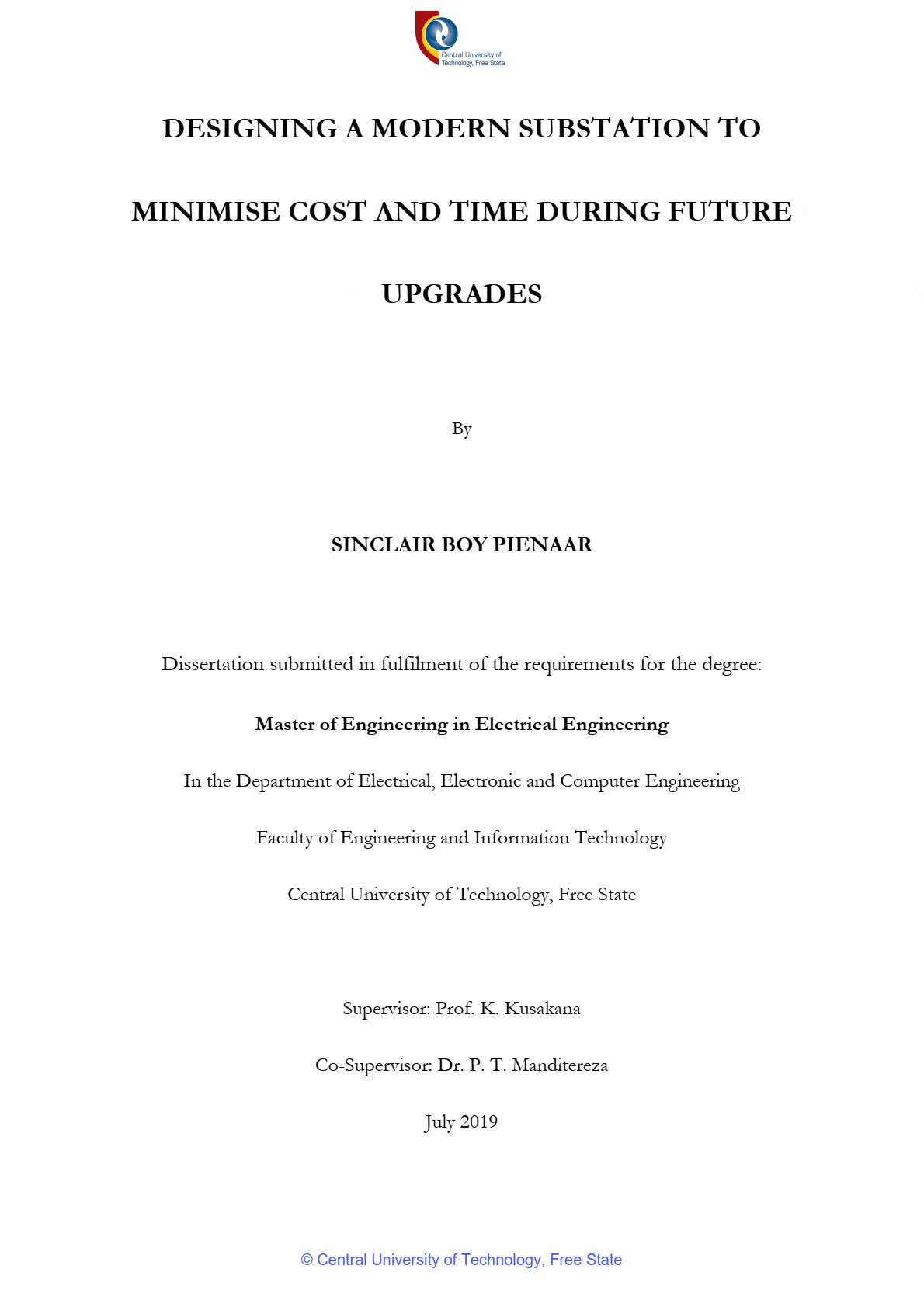Substation SCADA design
The challenge with hardwiring, is that the connections to the protection schemes are different; the data transferred is slow and cannot be compared. The communication failure reports locally at the protection IED and remotely to the station HMI. Each control plant scheme was provided with a 110 V DC supply for the protection system, back-up protection system, ethernet switch and breaker spring rewind circuits.

The 240 V AC supply was used to illuminate the amber Protection Not Healthy alarm on each protection module and to supply mechanism box heaters.
The rear of the new scheme modules is, open to ease access to the internal components and improve heat dissipation. The modern substation protection schemes were designed for a minimum operational lifespan of 20 years.
The D20 RTU interfaces serially with the substation IED’s, such as the transformer protection scheme, the On Load Tap Changer scheme, high voltage feeder back-up protection (REF 615) and the medium voltage feeder protection scheme (P145).
Figure 1 – Substation RS-485/DNP 3.0 serial communication architecture

The serial RS485 connection reduces the cost of hardwiring. The RS485 communications standard has up to 32 intelligent electronic devices (IED), that are connected on one port and the devices connect up to a distance of approximately 1200 meters.
The serial interfaces reduce the amount of hardwiring between IEDs and the RTU. All inputs and outputs are relayed, via serial communication (DNP3 protocol), to and from protection schemes, which reduced the complexity of wiring and installation time. Therefore, the size of the required IDF is smaller.
Control Plant cabling
Secondary plant, multi-core thermoplastic insulated cables, have a voltage rating of 600 to 1000 V and current ratings dependent on the cross-sectional area. During the installation of control plant cabling, provision was provided for sufficient slack to reach the furthest point on the terminals. A 10% spare capacity factor was used for all long run cables, when selecting cables for an application.
The reason for the additional cores, is to provide provision for damaged cores, should modifications be necessary at a later stage.
The cable block diagram, as in Figure 2, indicates the cable number and destination of each cable.
All the cabling used in Figure 2 below, is the very same cabling that will be used during substation upgrades.
Figure 2 – 66 kV feeder scheme cabling

All the safety clearances, foundations, conductor lengths, type of clamps used, steelwork and equipment heights, for future upgrades, were taken into consideration while designing the new 66/22 kV modern substation. Cable racks are provided, such that every cable is adequately supported, throughout its run.
The cable trays were installed, so that there will be a minimum of 400 mm between the cable tray and the control panels.
Power Plant designs
General Arrangement designs
The General Arrangement design, in Figure 3, ensures operability, maintainability and extendibility. Operability indicates that substation equipment may safely be opened, isolated, tested and earthed, for maintenance and refurbishment of equipment. The modern substation design improves safety and operability in substations, by adhering to safety clearances.
The control room on the General Arrangement design, in Figure 3, is close to the transformers in conserving costs on Control Plant cabling.
Figure 3 – 66/22 kV design for future upgrades

On the two 66 kV feeder bays and the two 66/22 kV transformer bays, the decommissioning of the following equipment, foundations and steelwork, were prevented during substation upgrades, to save cost and time:
- Two sets of 132 kV terminal supports,
- Two sets of 132 kV line isolators,
- Two sets of 132 kV current transformers,
- Four sets of 132 kV breakers,
- Four sets of 132 kV busbar isolators,
- Twelve 132 kV current transformers.
66 kV feeder bay section
For the 66 kV feeder bay section, in Figure 4, 132 kV clearances were used. With an increase in voltage, the further apart the safe working clearances, phase-to-phase clearances and phase to ground clearances. Phase-to-phase and phase-to-ground clearance, is for preventing voltage flashovers. Safe working clearances, prescribe distances that should be adhered to, depending on apparatus voltage level.
Safe working clearances are for allowing work to be carried out safely on isolated and earthed primary plant apparatus, whilst adjacent equipment is in service.
Figure 4 – 66 kV feeder bay (132 kV clearances)

All the equipment on the 66 kV incoming feeder bays was strung with a Centipede conductor. The 66 kV section design, in Figure 4, has 132 kV clearances on the high voltage side, saving on labour and cost, during substation upgrades.
Reducing labour and cost during substation upgrades was achieved, by decommissioning the 66 kV voltage carrying apparatus and installing the 132 kV apparatus.
| Title: | Guidelines for a modern digital substation design – SINCLAIR BOY PIENAAR; Dissertation submitted in fulfilment of the requirements for the degree: Master of Engineering in Electrical Engineering In the Department of Electrical, Electronic and Computer Engineering Faculty of Engineering and Information Technology Central University of Technology, Free State |
| Format: | |
| Size: | 3.2 MB |
| Pages: | 105 |
| Download: | Here 🔗 (Get Premium Membership) | Video Courses | Download Updates |


